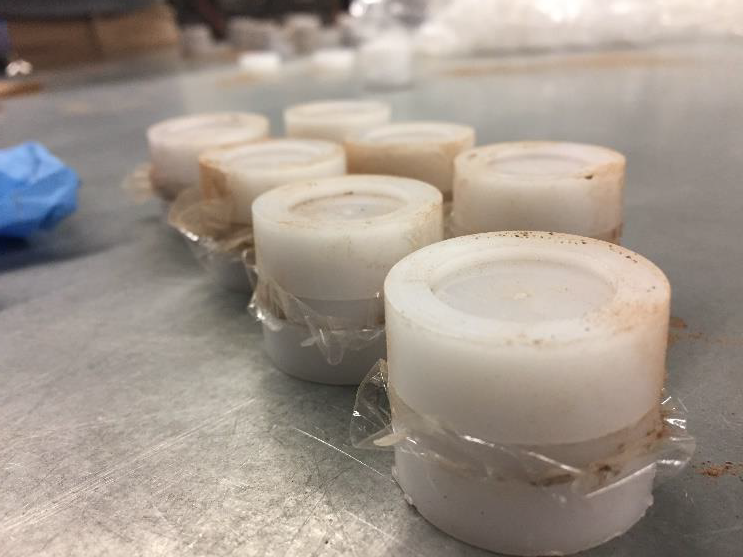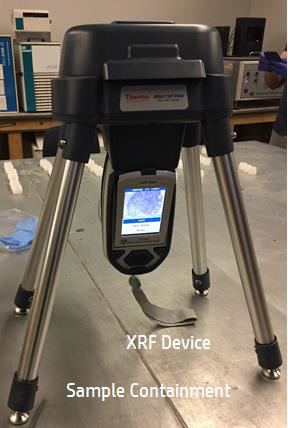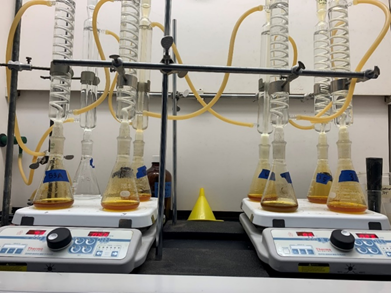Experimental Work
X-Ray Fluorescence Analysis
A handheld Niton XL3t x-ray fluorescence (XRF) device was utilized throughout the lab
work time to analyze each soil sample. The XRF analysis followed EPA Method 6200
Field Portable X-Ray Fluorescence Spectrometry for the Determination of Elemental
Concentrations in Soil and Sediment and was conducted in Room 117 of the Engineering
Building. Nine sub-samples were taken from each sample using plastic cups comprised of
four pieces; the base, connector, plastic, and cap. These plastic cups are approximately
the size of a dollar coin in diameter and about an inch tall in and can hold approximately
21 g of soil. This setup can be seen in the figure below.

Once ready, one of these cups was placed into the portable XRF stand. On top is a lid
surrounded on the interior with lead so that no x-rays escape during analysis. This lid was
closed around the sample. The portable XRF device is turned on and snapped into place
on the bottom side of the stand. This can be seen in figure below.

Following the sampling and analysis plan outlined in the work plan, each sample was
divided into nine sub-samples. Each sub-sample was analyzed for a total of 90 seconds
using Soils Mode on the XRF device. The sub-samples were identified by the letters A
through I to indicate the different samples. After all sub-samples were analyzed, the soil
was placed back into the sample bags. The cup was decontaminated by being scrubbed in
a water bath and dried with a paper towel. Waste from the decontamination process was
treated as hazardous waste and stored in designated hazardous waste bins.
Acid Digestion
EPA method 3050B volatilizes all the selected contaminants in soil and condenses them
into a liquid form so the sample is prepared for Flame Atomic Absorption Spectrometry
(FAAS) following ASTM E1613-12. Samples chosen for digestion were determined by
sorting the lead XRF data from least to greatest. Since 82 samples were collected, every
fourth sample analyzed from the organized data was selected for testing for a total of 20
samples.
This method required two hot plates, eight condensers and eight flasks. As shown in The figure below, the condensers were connected with rubber tubes to a water source. All of the flasks are filled first with nitric acid (HNO3) then 30% hydrogen peroxide (H2O2) and hydrochloric acid (HCl).
